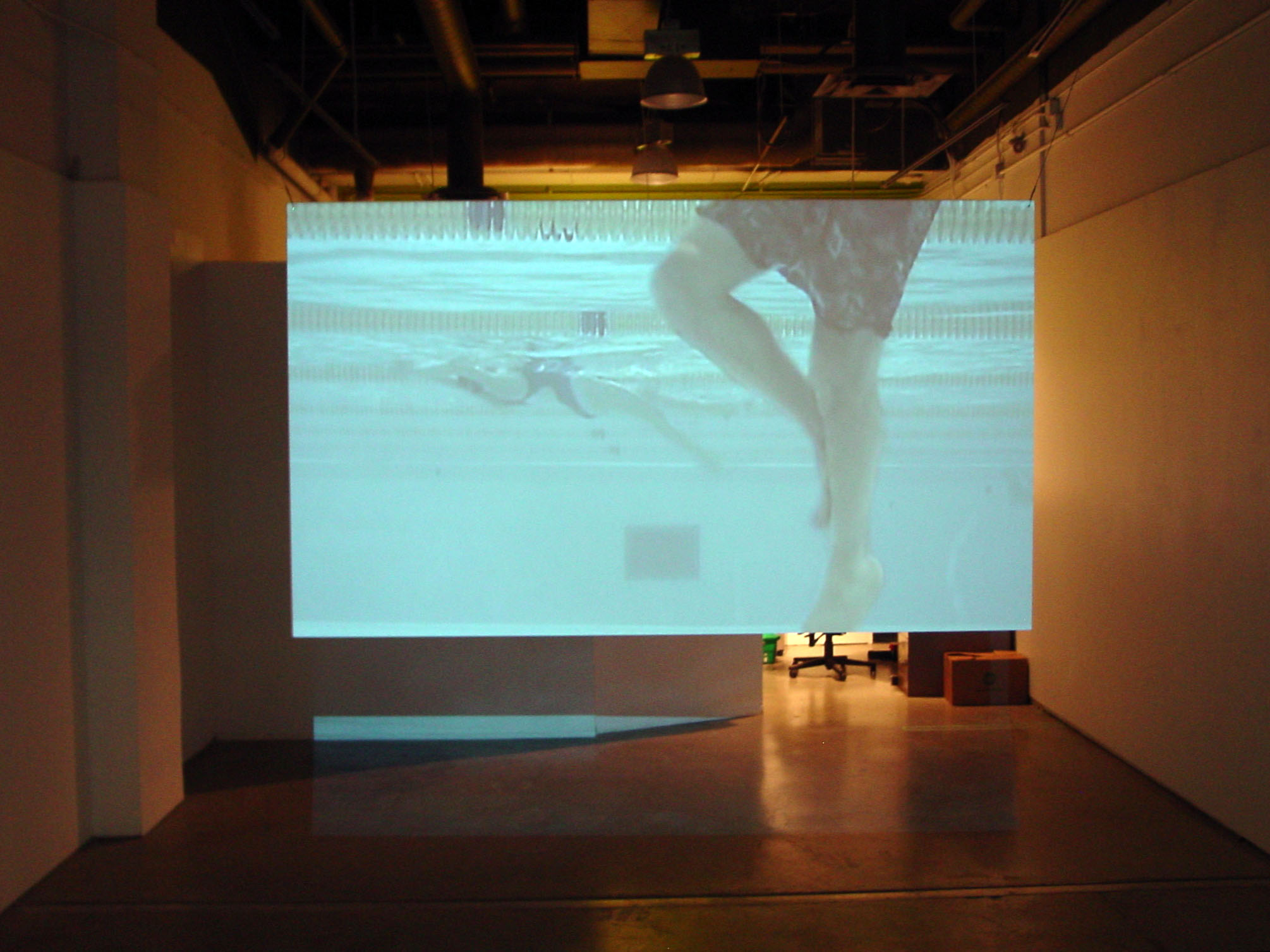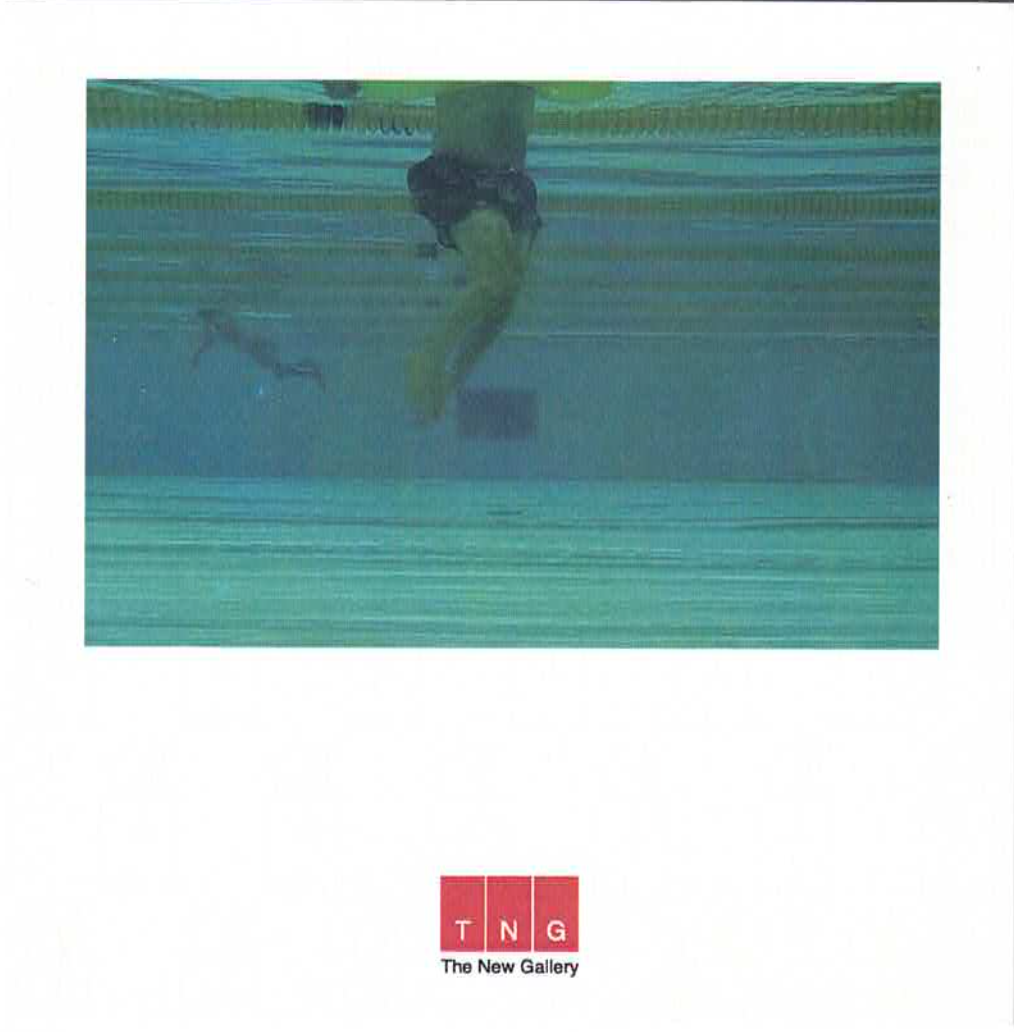
The Swimmers
Christophe Jivraj
October 2 - November 7, 2009









For over five years I have been working with and photographing a group of cognitively lucid and severely disabled adults. The Swimmers is composed of two synchronized videos I created while photographing my subjects as they were swimming. The two cameras were placed on opposite ends of the pool in order to capture varying perspectives of the same action: the awkward and beautiful grace of “the swimmers”. - Christophe Jivraj (2007)

Christophe Jivraj holds an MFA in Photography from Concordia University in Montréal. He has participated in numerous gallery exhibitions in Montréal and Toronto and The Swimmers was previously presented at Harcourt House in Edmonton. He currently lives and works in Toronto.
Pablo Rodrigues is a freelance writer living in Montréal. He has published book and exhibition reviews in Parachute, revue d'art contemporain and Canadian Art. A Master’s candidate in the Art History program at Concordia University, Pablo’s current research focuses on the interplay between photography, sense, and performance in contemporary art.
Pablo Rodrigues is a freelance writer living in Montréal. He has published book and exhibition reviews in Parachute, revue d'art contemporain and Canadian Art. A Master’s candidate in the Art History program at Concordia University, Pablo’s current research focuses on the interplay between photography, sense, and performance in contemporary art.
The Swimmers
by Pablo Rodriguez
Like Christophe Jivraj’s previous photographic series, The Swimmers is a visual document of difficulty stripped of its ambiguity. Recorded simultaneously from opposite sides of a busy public pool, the two underwater videos that make up this installation recover the lived time of a physical therapy session, an event which involved a group of “cognitively lucid and severely physically disabled adults”- the same adult with whom Jirvaj has workers, as a caregiver and an artist, for the past five years. In The Swimmers, these two videos are synchronized and simultaneously projected onto both sides of a screen suspended in a darkened room. The result is a sparse, yes elegant hallucination; a liquid slice of time around which one is encouraged to roam. Memory, as well as one’s ambulatory experience of the setting, play important roles. Magnificently projected, “The Swimmers” keep to the surface. They tread, struggle, and pause there; they swim, now entering, now exiting the frame. A lone photographer appears at times, camera in hand and flippers at his feet - a reminder of the labor of representation, but also a sign of the multiple spacings that constitute our experience of the work.
by Pablo Rodriguez
Like Christophe Jivraj’s previous photographic series, The Swimmers is a visual document of difficulty stripped of its ambiguity. Recorded simultaneously from opposite sides of a busy public pool, the two underwater videos that make up this installation recover the lived time of a physical therapy session, an event which involved a group of “cognitively lucid and severely physically disabled adults”- the same adult with whom Jirvaj has workers, as a caregiver and an artist, for the past five years. In The Swimmers, these two videos are synchronized and simultaneously projected onto both sides of a screen suspended in a darkened room. The result is a sparse, yes elegant hallucination; a liquid slice of time around which one is encouraged to roam. Memory, as well as one’s ambulatory experience of the setting, play important roles. Magnificently projected, “The Swimmers” keep to the surface. They tread, struggle, and pause there; they swim, now entering, now exiting the frame. A lone photographer appears at times, camera in hand and flippers at his feet - a reminder of the labor of representation, but also a sign of the multiple spacings that constitute our experience of the work.
